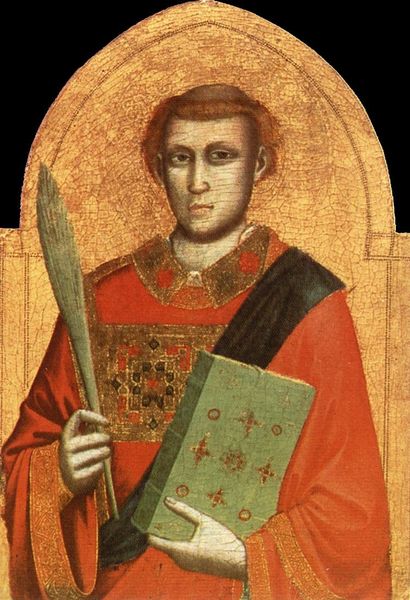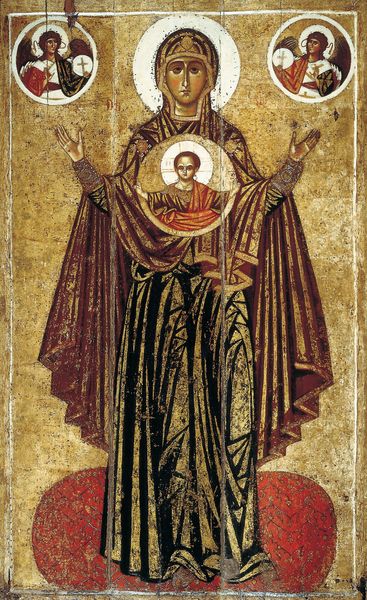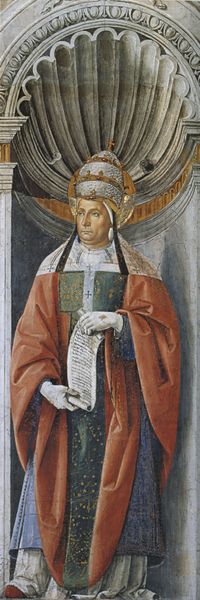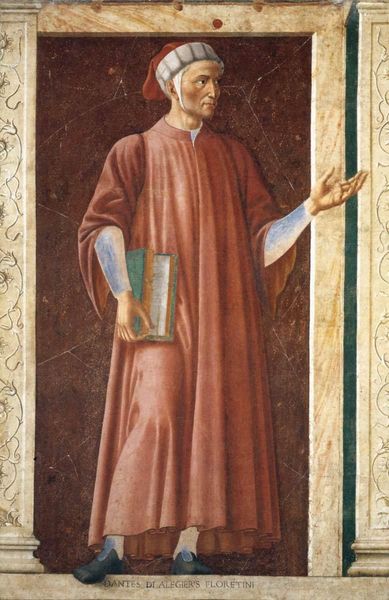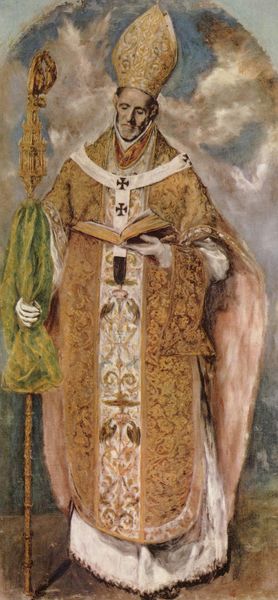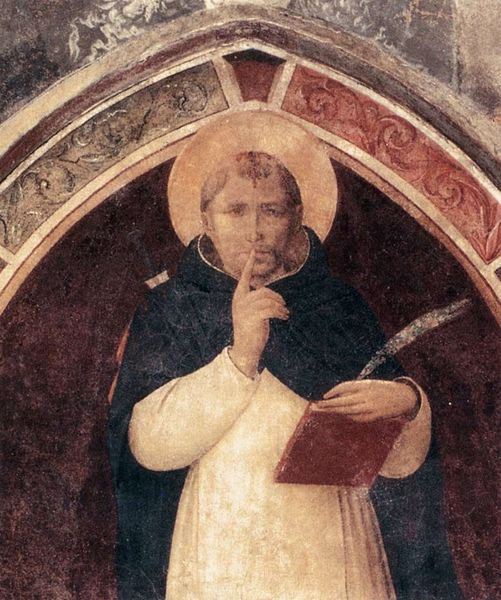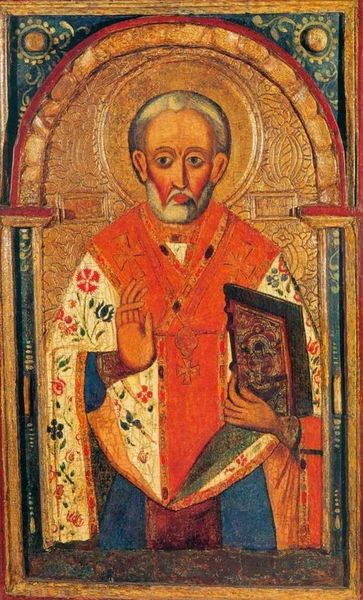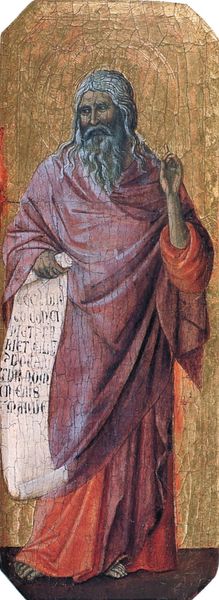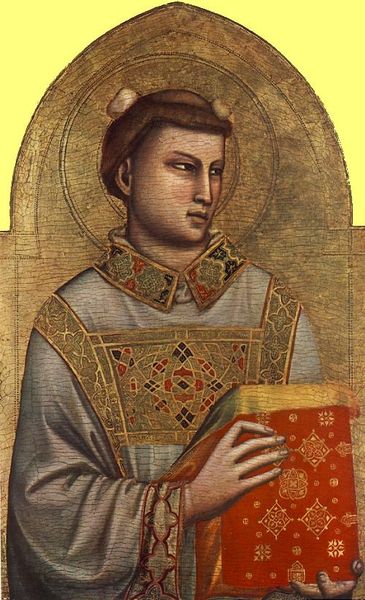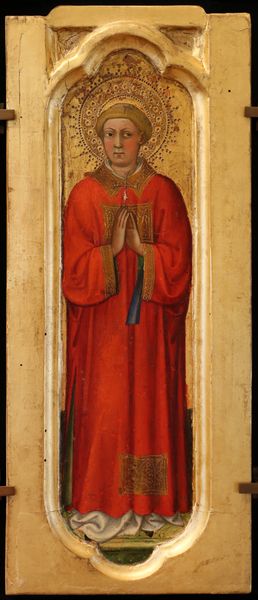
painting, fresco
#
portrait
#
painting
#
figuration
#
fresco
#
oil painting
#
christianity
#
academic-art
#
italian-renaissance
Dimensions: 200 x 110 cm
Copyright: Public domain
Curator: Here we have Benozzo Gozzoli's "St. Fortunatus Enthroned," a fresco dating back to around 1450, a striking example of Italian Renaissance art. Editor: My first thought is how the muted colors create a feeling of serenity, almost contemplative. The red of the robe dominates but feels strangely… earthly, given the subject. Curator: Yes, Gozzoli manages to humanize a religious figure, embedding him in a visible earthly landscape as if validating his holiness through direct association with real space and place. This approach reflects Renaissance humanism and an interest in lived experience. Editor: It's fascinating how he renders the fabrics, too. You can almost feel the weight of the robe, the layering, like heavy canvas dyed crimson. The artist is showing us that robes were made. Someone, perhaps more than one someone, sat and stitched this garment to symbolize the power this figure possessed in his role. Curator: Precisely. These details connect with the growing wealth of Italian merchant culture that supported such artwork and religious institutions, using such portraiture to solidify spiritual and worldly authority. Gozzoli secured several high-profile commissions in his career. Editor: It brings attention to the social network that was present, to labor practices and the use of materials from distant places, for dyes. Curator: The stiff formality of the pose reinforces Fortunatus' position. The halo is less a mystical aura than an emblem, adding to the power dynamic in play here, not to mention, his status in the hierarchy. It mirrors the increasing formalization of religious institutions during the era. Editor: And look at the book in his left hand. We tend to idealize the production of these illuminated texts, when really, there would have been laborers responsible for producing everything, including the ground pigments for the colors to writing, notating, illuminating the text, and of course, binding. Curator: His gaze feels direct but distant, a carefully calibrated balance between approachable saint and authoritative figure—crucial for maintaining influence within a changing society. It’s about control in many ways, not merely devotion. Editor: Thinking about how the fresco was made in its setting, considering humidity and natural conditions and their potential impact reminds us that art production doesn’t occur in some ethereal zone but in the here and now. Curator: Absolutely. Reflecting on the material origins and reception context together gives us a fuller appreciation for the complex role of "St. Fortunatus Enthroned." Editor: Indeed, it reminds us art history is not just about aesthetics or "genius," it’s also about human work.
Comments
No comments
Be the first to comment and join the conversation on the ultimate creative platform.
